It is the middle of May on a hot sticky late morning in Mumbai (formerly Bombay), one of the hotter periods of the year, the sun is ascending to its highest point as it approaches midday.
We are in the Central-West part of the city, standing on Juhu Tara Road just a two-minute walk from the famous Juhu beach.
As soon as the transport arrives my spouse and I jump in without hesitation, out of the scorching sun into a pleasantly air-conditioned taxi.
Our destination – “The Goose and Gridiron” restaurant.

The author at the Goose and Gridiron, Mumbai. Photo: Alex Lishanin.
Goose and Gridiron Restaurant menu, with Masonic symbols. Photo: Alex Lishanin.
A fifty-minute drive through colourful Mumbai brings us onto a quiet and wide street. Stepping out of the taxi, in front of us is a tall building with a modern look and a large sign, ‘Sterling Cinema’.
As we are looking around for the restaurant, we manage to spot it on the other side of the road, a cleverly hidden terrace covered in plenty of screens and leafy plants.
Stepping under its roof is like stepping into a forgotten era; a combination of long wooden benches and smaller tables with mosaic tops, from the ceiling are suspended differently coloured lanterns and strategically placed fans.
Yet, still too hot to sit outside, we decide to step inside, into a London-style bar with full-on AC and rock music.
As I look around, the wall behind me is adorned with canvases of pyramids, ‘third eyes’ and other signs hinting to Freemasonry.
A waiter brings us a menu, which on its first page reads a story of the origins of the bar’s name.
Going further through the menu, I notice that quite a few dishes, rather than having the usual letter markings of the meal type (V-vegetarian, S-spicy) instead display a little Masonic symbol of square and compasses.

Freemasons’ Hall, Mumbai. Photo: Alex Lishanin.
After a delicious meal, we went to visit the Masonic Hall which is supposed to be right next to the restaurant; according to the waiter, the two establishments are in fact attached to one another.
Upon exiting the restaurant and going up the street, we discovered the waiter gave an accurate account.
However, when reaching the corner of the street, the old building with a lavish three-arched stone porch does not indicate an entrance to a Masonic Hall, only a small marble plaque on the front porch stone pillar is giving it away.
Entering the building the ground floor is open for the public to visit. I find myself surrounded by a number of Brethren masterfully brushed onto large paintings suspended from the four walls.
Alongside these is are a statue of Jahangeer Cursetjee Mistree – Honorary Past Deputy Grand Master and Grand Secretary of the Grand Lodge of all Scottish Freemasonry in India, and a marble wall of Rt. Worshipful Bro. and Most Excellent Companion Khursheedjee Rustomjee Cama.

Statue of Jahangeer Cursetjee Mistree, Honorary Past Deputy Grand Master and Grand Secretary of the Grand Lodge of all Scottish Freemasonry in India – Freemasons’ Hall, Mumbai. Photo: Alex Lishanin.
At the very end of the entrance hall, there is an office of the Hon. Secretary and Treasurer.
I knock on the opened door, followed by a semi-loud inquisitive ‘Hello?’ A figure pops from behind the desk: “Yes, how may I help?”
I am invited to sit down over a cup of tea and chat about Masonry in Mumbai. Soon enough it becomes spiced up with few stories but the one that most catches my attention most is a story of the first Indian to enter the Masonic Brotherhood of India.
At the very end of the entrance hall, there is an office of the Hon. Secretary and Treasurer.
I knock on the opened door, followed by a semi-loud inquisitive ‘Hello?’ A figure pops from behind the desk: “Yes, how may I help?”
I am invited to sit down over a cup of tea and chat about Masonry in Mumbai. Soon enough it becomes spiced up with few stories but the one that most catches my attention most is a story of the first Indian to enter the Masonic Brotherhood of India.
Freemasonry was founded in India in 1728, but it was not available to the natives of the land until Lodge Rising Star of Western India was consecrated. Mumbai’s prominent merchant, one Manockjee Cursetjee (1808-1887), applied three times to join Lodge Perseverance No. 546, but was denied on each occasion on the grounds of being an Indian.
In those times any social synergy between Indians and Europeans was very much non-existent, thus rejecting Cursetjee’s applications in order to prevent any further applications by other Indians desiring to join the Brotherhood.
Determined to see the light of Freemasonry, Cursetjee set off for England, where his cause found favour with the Duke of Sussex, then the Grand Master of England. Unfortunately, upon his arrival, the Duke had already left for mainland Europe.
Cursetjee then went to Paris where, in 1842, through the influence of the Duke of Decazes, he joined the Lodge A La Gloria de l’Universe. Upon his return to Mumbai, members of Perseverance lodge concluded that in the interest of the Craft admitting properly qualified Indians into Freemasonry would be prudent.
Towards the end of year 1843, Lodge Rising Star of Western India was duly formed with Right Worshipful Brother Dr James Burnes as its first Master and Brother Manockjee Cursetjee as its first Secretary.

Freemasons’ Hall, Mumbai, ground floor. Photo: Alex Lishanin.
The Brother relating this tale concluded: “The rising Star of Western India lodge gradually increased the number of its members and last year celebrated its 175th anniversary.”
Next day as I am dining in the Shalimar Hotel, I ponder about the man who had become the first Indian to enter the Masonic Brotherhood of India.

Rt. Wor. Bro. Manockjee Cursetjee, Pioneer of Freemasonry in Western India.
Image via: Lodge Rising Star of Western India
With a mobile phone to hand and excellent internet connection, all the information is at my fingertips.
I scroll through Google hits displaying his name and discover many interesting things about the man; with one most notable, his fervent desire to be able to provide education for the women of India.
In 1859, in his own house “Villa Byculla”, he started the first English school for Indian girls with an English governess.
His book, entitled “A few passing ideas for the benefit of India and Indians” (1862), gives invaluable insight into his philosophy, struggle and work towards enlightenment of the natives of his country.
The book gives an account of correspondence between himself and other progressive minds such as the Hon. Mountstuart Elphinstone, founder of the first native educational institute in Bombay; Hon. John Elliot Drinkwater Bethune, founder of the first native female school in Calcutta; the Chairman of the Select Committee of Parliament whom Cursetjee corresponded with “On the moral regeneration of the natives of India” (pg 48).
Cursetjee also corresponded with Reverend W.R. Fletcher on “Founding the young Ladies’ institute among Parsees and other Natives of Bombay” (pg 70), where in his own words he states: “The following selection of correspondence will be found to illustrate my views aforesaid on education in general, and female education in particular, among the Natives of India…”
In the beginning of the Preface of “A few passing ideas for the benefit of India and Indians”, Cursetjee notes:
When young and wild in my green days, I wrote to a Native friend of mine, I was treading the way to ruin – stood on the precipice of perdition – by occasional indulgence of some of our national vices; but I had some real friends who were watching my movements; they administered sharp rebukes on my occasional foibles; and which had the effect of snatching me from my doom, and enabling me, by their precepts, and by their examples, which I paid attention to, to come to the right path of thinking and acting.
As I put my mobile down, I finish my freshly squeezed watermelon juice, watching the busy Mumbai street through the window of Shalimar restaurant;
Bro. Cursetjee’s last words echoing in my head:
![]()
…to come to the right path of thinking and acting…
Further Reading

History of Lodge Rising Star of Western India #342 GLoS
Article by: Alex Lishanin

A Few Passing Ideas for the Benefit of India and Indians
By: Manockjee Cursetjee
A Few Passing Ideas for the Benefit of India and Indians by Manockjee Cursetjee.
This Correspondence originally printed for private circulation only, but the subject appeared to be of such importance to all interested in the cause of Female Education in the East, both proving what has already been effected and also what the efforts of a single mind bent upon improving the moral and intellectual condition of a country may accomplish, that it is hoped the following may move the interest and sympathy of many to greater interest in the education and regeneration of the natives of India.
Recent Articles: in people series
 Celebrate the extraordinary legacy of The Marquis de La Fayette with C.F. William Maurer's insightful exploration of Lafayette's 1824-25 tour of America. Discover how this revered leader and Freemason was honored by a young nation eager to showcase its growth and pay tribute to a hero of the American Revolution. |
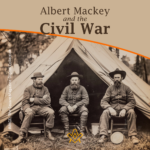 Albert Mackey and the Civil War In the midst of the Civil War's darkness, Dr. Albert G. Mackey, a devoted Freemason, shone a light of brotherhood and peace. Despite the nation's divide, Mackey tirelessly advocated for unity and compassion, embodying Freemasonry's highest ideals—fraternal love and mutual aid. His actions remind us that even in dire times, humanity's best qualities can prevail. |
 Discover the enduring bond of brotherhood at Lodge Dumfries Kilwinning No. 53, Scotland's oldest Masonic lodge with rich historical roots and cultural ties to poet Robert Burns. Experience rituals steeped in tradition, fostering unity and shared values, proving Freemasonry's timeless relevance in bridging cultural and global divides. Embrace the spirit of universal fraternity. |
 Discover the profound connections between John Ruskin's architectural philosophies and Freemasonry's symbolic principles. Delve into a world where craftsmanship, morality, and beauty intertwine, revealing timeless values that transcend individual ideas. Explore how these parallels enrich our understanding of cultural history, urging us to appreciate the deep impacts of architectural symbolism on society’s moral fabric. |
 Discover the incredible tale of the Taxil Hoax: a stunning testament to human gullibility. Unmasked by its mastermind, Leo Taxil, this elaborate scheme shook the world by fusing Freemasonry with diabolical plots, all crafted from lies. Dive into a story of deception that highlights our capacity for belief and the astonishing extents of our credulity. A reminder – question everything. |
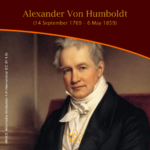 Dive into the extraordinary legacy of Alexander Von Humboldt, an intrepid explorer who defied boundaries to quench his insatiable thirst for knowledge. Embarking on a perilous five-year journey, Humboldt unveiled the Earth’s secrets, laying the foundation for modern conservationism. Discover his timeless impact on science and the spirit of exploration. |
 Voltaire - Freethinker and Freemason Discover the intriguing connection between the Enlightenment genius, Voltaire, and his association with Freemasonry in his final days. Unveil how his initiation into this secretive organization aligned with his lifelong pursuit of knowledge, civil liberties, and societal progress. Explore a captivating facet of Voltaire's remarkable legacy. |
 Robert Burns; But not as we know him A controversial subject but one that needs addressing. Robert Burns has not only been tarred with the presentism brush of being associated with slavery, but more scaldingly accused of being a rapist - a 'Weinstein sex pest' of his age. |
 Richard Parsons, 1st Earl of Rosse Discover the captivating story of Richard Parsons, 1st Earl of Rosse, the First Grand Master of Grand Lodge of Ireland, as we explore his rise to nobility, scandalous affiliations, and lasting legacy in 18th-century Irish history. Uncover the hidden secrets of this influential figure and delve into his intriguing associations and personal life. |
 James Gibbs St. Mary-Le-Strand Church Ricky Pound examines the mysterious carvings etched into the wall at St Mary-Le-Strand Church in the heart of London - are they just stonemasons' marks or a Freemason’s legacy? |
 Freemasonry and the Royal Family In the annals of British history, Freemasonry occupies a distinctive place. This centuries-old society, cloaked in symbolism and known for its masonic rituals, has intertwined with the British Royal Family in fascinating ways. The relationship between Freemasonry and the Royal Family is as complex as it is enduring, a melding of tradition, power, and mystery that continues to captivate the public imagination. |
 A Man Of High Ideals: Kenneth Wilson MA A biography of Kenneth Wilson, his life at Wellington College, and freemasonry in New Zealand by W. Bro Geoff Davies PGD and Rhys Davies |
 In 1786, intending to emigrate to Jamaica, Robert Burns wrote one of his finest poetical pieces – a poignant Farewell to Freemasonry that he wrote for his Brethren of St. James's Lodge, Tarbolton. |
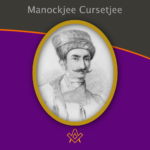 Alex Lishanin explores Mumbai and discovers the story of Lodge Rising Star of Western India and Manockjee Cursetjee – the first Indian to enter the Masonic Brotherhood of India. |
 Aleister Crowley - a very irregular Freemason Aleister Crowley, although made a Freemason in France, held a desire to be recognised as a 'regular' Freemason within the jurisdiction of UGLE – a goal that was never achieved. |
 Sir Joseph Banks – The botanical Freemason Banks was also the first Freemason to set foot in Australia, who was at the time, on a combined Royal Navy & Royal Society scientific expedition to the South Pacific Ocean on HMS Endeavour led by Captain James Cook. |
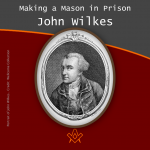 Making a Mason in Prison: the John Wilkes’ exception? |
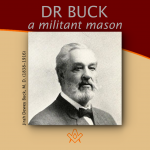 "To be a good man and true" is the first great lesson a man should learn, and over 40 years of being just that in example, Dr Buck won the right to lay down the precept. |
 Elias Ashmole: Masonic Hero or Scheming Chancer? The debate is on! Two eminent Masonic scholars go head to head: Yasha Beresiner proposes that Elias Ashmole was 'a Masonic hero', whereas Robert Lomas posits that Ashmole was a 'scheming chancer'. |
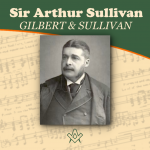 Sir Arthur Sullivan - A Masonic Composer We are all familiar with the comic operas of Gilbert and Sullivan, but did you know Sullivan was a Freemason, lets find out more…. |
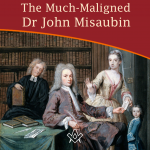 The Much-Maligned Dr John Misaubin The reputation of the Huguenot Freemason, has been buffeted by waves of criticism for the best part of three hundred years. |
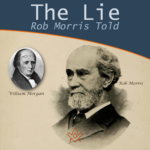 Was William Morgan really murdered by Masons in 1826? And what was the lie Masonic author Rob Morris told? Find out more in the intriguing story of 'The Morgan Affair'. |
 Lived Respected - Died Regretted Lived Respected - Died Regretted: a tribute to HRH The Prince Philip, Duke of Edinburgh |
 Who was Moses Jacob Ezekiel, a Freemason, American Civil War Soldier, renowned sculptor ? |
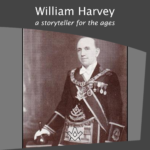 A Masonic author and Provincial Grand Master of Forfarshire in Scotland |
 Who was Philip, Duke of Wharton and was he Freemasonry’s Loose Cannon Ball ? |
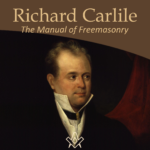 Richard Carlile - The Manual of Freemasonry Will the real author behind The Manual of Freemasonry please stand up! |
 Nicholas Hawksmoor – the ‘Devil’s Architect’ Nicholas Hawksmoor was one of the 18th century’s most prolific architects |
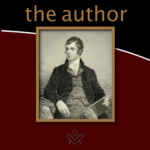 By Bro. Anthony Oneal Haye (1838-1877), Past Poet Laureate, Lodge Canongate Kilwinning No. 2, Edinburgh. |
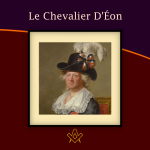 The Curious Case of the Chevalier d’Éon A cross-dressing author, diplomat, soldier and spy, the Le Chevalier D'Éon, a man who passed as a woman, became a legend in his own lifetime. |
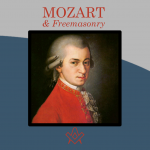 Mozart Freemasonry and The Magic Flute. Rev'd Dr Peter Mullen provides a historical view on the interesting topics |
masonic knowledge
to be a better citizen of the world
share the square with two brothers

click image to open email app on mobile device









